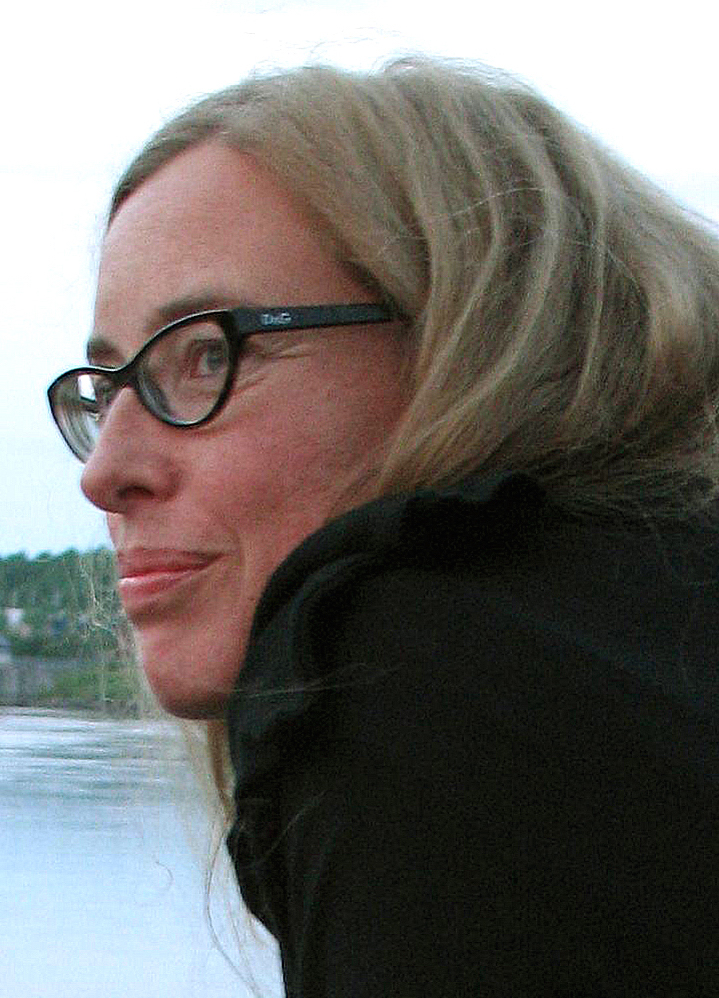Janna Holmstedt is a transdisciplinary artist and environmental humanities researcher based in Stockholm. She is heading the art- and research project Humus economicus at National Historical Museums, Sweden (SHM), which focuses on soil care, soil blindness, and soil as multispecies activity zone, and part of the project group for Reclaiming Futures Storying Change (read more below). Between 2019-2021 she was stationed at KTH Royal Institute of Technology at the Division of History of Science, Technology and Environment as Artistic Director and Coordinator of The Posthumanities Hub. She holds a PhD in Fine Arts in Visual Arts from Umeå University and Lund University, Sweden, and has been a core member of The Posthumanities Hub since 2018.

Her research explores listening and storying as critical-creative modes of inquiry, the cultivation of care and environmental attention, multispecies relations, and composition in the expanded field of genre-disobedient art practices. In her work, dolphins, maize, earthworms and bladder wrack have been important companion species to think with and learn from. As part of her methodological tool box, she uses sound, listening sessions and soundwalks, as well as site-specific interventions and mixed-media installations, together with text, drawing and mapping (see www.jannaholmstedt.com).
Her PhD dissertation Are You Ready for a Wet Live-In? Explorations into Listening (Lund and Umeå University, 2017) focuses on how sound and listening, in a visually dominated culture, could mediate new relationships with the more-than-human. It departs from the archival material, and especially the sound recordings, of American neurophysiologist John C. Lilly, who in the 1950s and 1960s conducted controversial scientific communication experiments with dolphins. Lilly’s experiments and sound recordings serve as a departure point for the consideration of new areas of perception and experience that sound technology has made possible: from the discovery of whale songs in the deeps of the oceans, to outer space with the hope of communicating with other intelligent life, to the womb and the sound environment of the fetus. Sound has a special capacity to transgress and renegotiate established perceptions and borders, at the same time as it renders the underheard or not-yet-heard tangible. To turn to an auditory domain though, is not a question of closing one’s eyes, but of taking more of the sensuous and bodily experiences into account. Holmstedt proposes that listening can be seen as a knowledge practice, and forms of active listening offer situated and deeply relational methods, with ethico-political implications that troubles Western, visually oriented knowledge systems in productive ways.
Her current research project Humus economicus: Soil Blindness and the Value of “Dirt” in Urbanized Landscape inquiries into radically altered human-soil relations, the invisible work of soils, and practices of soil care in times when soils are sealed and degraded at rapid rates. Through the Humus Economicus Collaboratory it gathers artists, environmental-, urban-, gender-, and heritage scholars, and connects with a growing number of soil stewards. The project explores how multiple forms of inheritance and potential futures meet in the subject of soil, as they tie together political ecologies into conflict zones where nature and culture, human and non-human cannot easily be discerned and held apart. Humus economicus intends to stay with these troubles. It also recognizes that soil is not a “charismatic other” as whales for example, which manages to mobilize empathy and action. Soil is rather un-charismatic and constitutes a wider form of bio-agency. The project combines issues of public space, communal experience, and biological processes to transform imaginaries of soil, and attends to living soil as a collaborator, an assemblage of multiple agents, and (with Puig de la Bellacasa) an urgent matter of care. This includes curating art-and-science-informed interventions that train our minds to go visiting in ways that spatially stitch together diverse sites in relationally complex knots. (Funded by Formas, a Swedish Research Council for Sustainable Development).
Holmstedt is also participating researcher and one of the team leaders in the Formas-funded project Relaiming Futures, Storying Change (Pi: Cecilia Åsberg, LiU), a partnership between Linköping University, National Historical Museums, Färgfabriken Art Space, Kajman Media, and KW production. In collaboration with Bromma Gymnasium and Art Lab Gnesta, the project facilitates explorative and arts-based processes where the participating teenagers take an active part in storying and communicating issues at stake for their future through film making, a festival and social media.
Holmstedt has been invited to international Artists-in-Residence programs such as HIAP and Sumu in Finland, NIFCA in Estonia, Bemis Center in USA, and TCG Nordica in China. Most recently, Holmstedt’s work has been presented in exhibitions, festivals and talks at Het Nieuwe Instituut, Rotterdam, Netherlands, the Scandinavian Center, Jingdezhen, China, Public Art Agency Sweden and Moderna Museet, Stockholm, Malmö Art Museum, Intonal Experimental Music Festival and Inter Arts Center, Malmö.